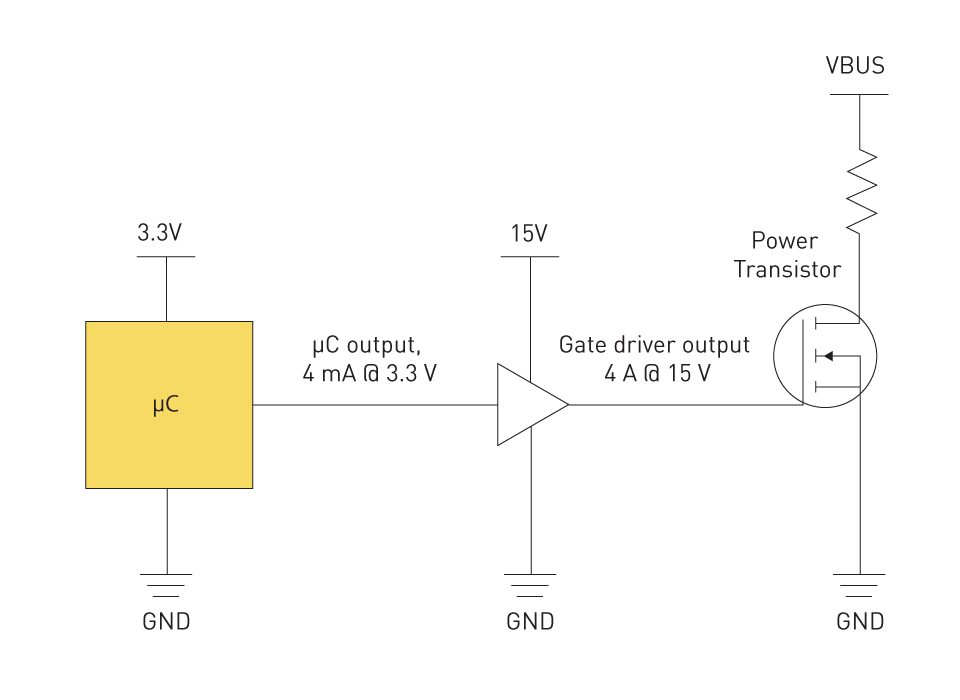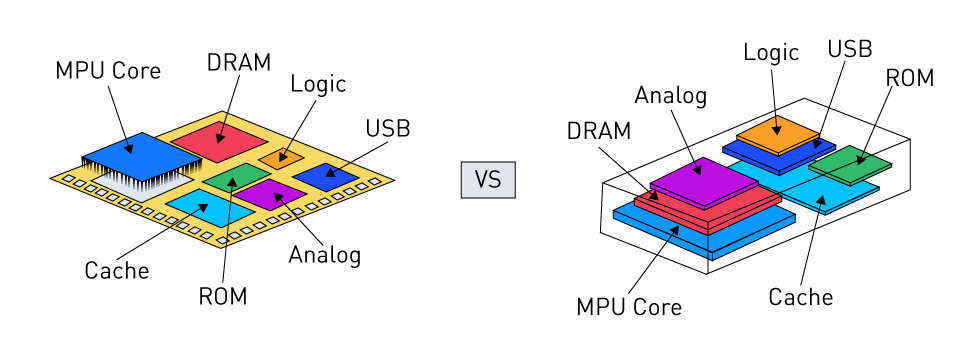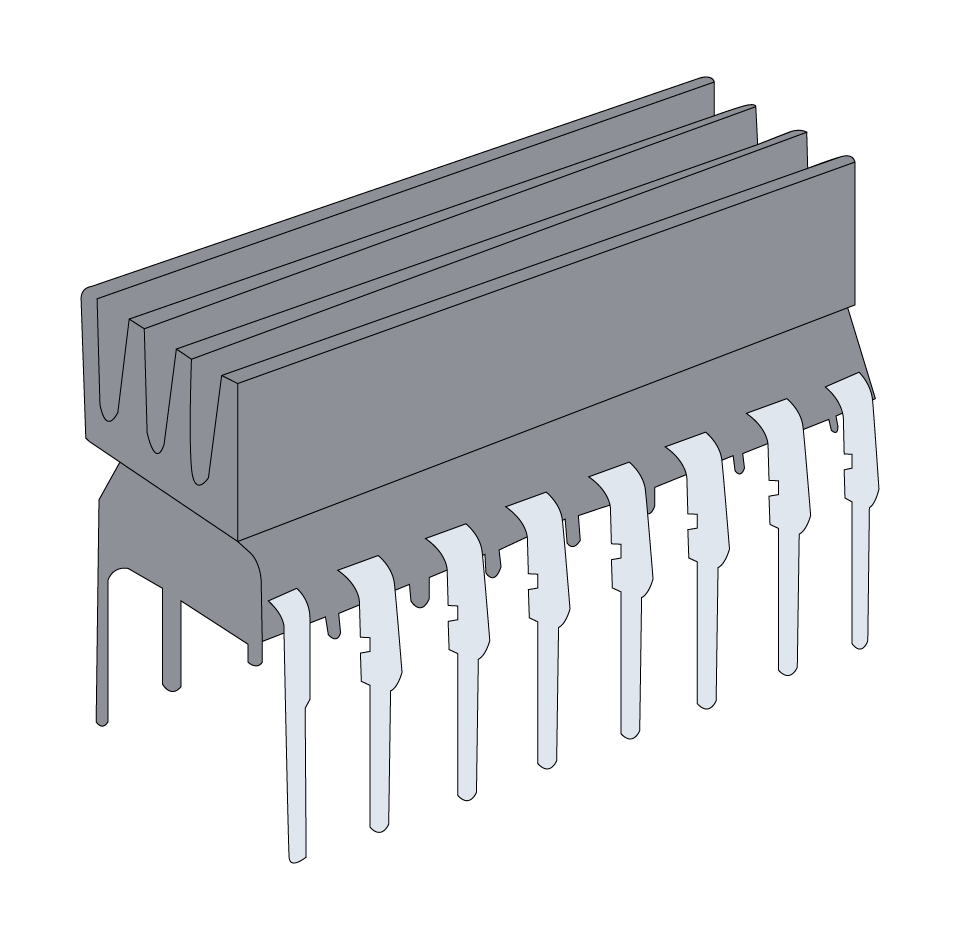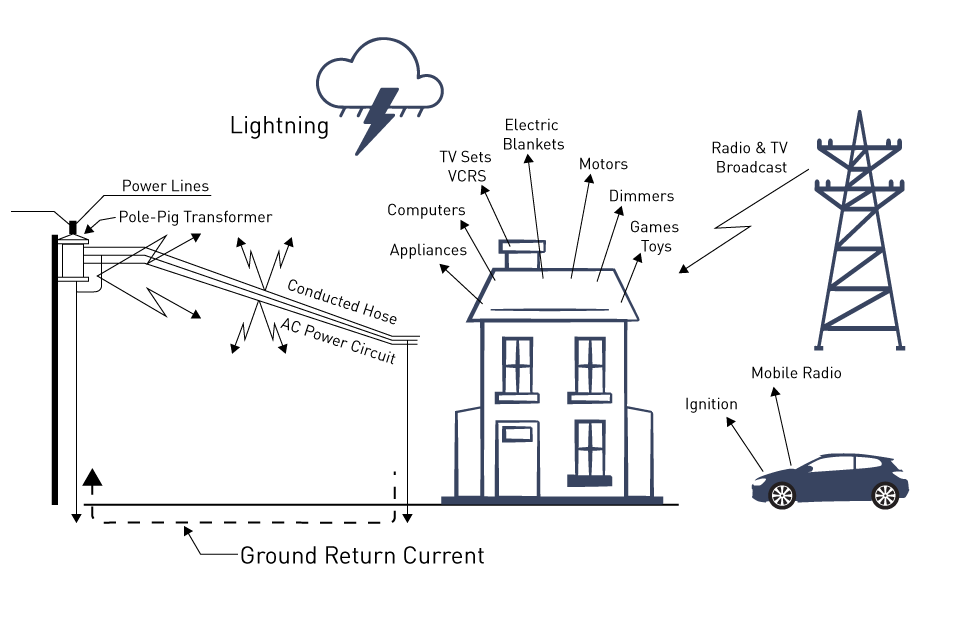Integrated DC/DC Converters
Integrated DC/DC converters play a critical role in the architecture of modern digital isolators. Providing isolated power to the circuitry on the isolated side of the digital isolator, these converters hold significant importance.
Working Principle and Configuration
Fundamental Operation: In digital isolators, integrated DC/DC converters operate through the conversion of direct current (DC) from one voltage level to another. This process is accomplished through the utilization of energy storage elements such as inductors or capacitors, coupled with the control of switches and diodes.
Configuration: An input capacitor, an inductor, an output capacitor, a diode, and a switch (typically a transistor) are included in the basic configuration of an integrated DC/DC converter. Controlling the operation of the switch, toggling between on and off states, regulates the energy transferred from the input to the output, thereby controlling the output voltage.
Isolation Barrier: The primary side (input) and the secondary side (output) of isolated DC/DC converters are electrically isolated from each other. In inductive converters, this is frequently accomplished through the utilization of a transformer, or a capacitive isolation barrier.
Types of Integrated Converters: Buck, Boost, and Buck-Boost
Buck Converters: Buck converters, recognized as step-down converters, lower the input voltage to achieve a reduced output voltage. In applications where the load voltage need is lower than the available input voltage, buck converters are largely utilized.

Figure 1: Buck Converter Schematic
Boost Converters: Unlike buck converters, boost converters (step-up converters), raise the input voltage to a greater output voltage. In applications where the load needs a greater voltage than the one available at the input, boost converters are essential.

Figure 2: Boost Converter Schematic
Buck-Boost Converters: By combining the functionalities of both buck and boost converters, buck-boost converters can either step up or down the input voltage as required. Applications, where the input voltage can vary above or below the output voltage requirements, find suitability with these converters due to their versatility.

Figure 3: Buck-Boost Converter Schematic
A few design considerations are listed below:
Efficiency: Especially in battery-powered or energy-sensitive applications, the efficiency of these converters is a crucial factor. To minimize energy loss, designers must optimize the converter design.
Size and Component Selection: Factors such as the desired efficiency, output power, and space constraints influence the converter’s physical size and the selection of components like inductors and capacitors.
Thermal Management: During operation, integrated DC/DC converters generate heat, thus requiring effective thermal management techniques to ensure dependable performance.
Isolation Techniques and Materials
In the design and architecture of digital isolators, numerous techniques and materials are used to attain effective electrical isolation. The performance and suitability of the isolator for specific applications are impacted by the chosen technique.
Magnetic, Capacitive and Optical Isolation Methods
Magnetic Isolation: The principle of electromagnetic induction is utilized by this method. Transformers are frequently utilized, converting an electrical signal into a magnetic field within the primary coil, which is subsequently converted back into an electrical signal within the secondary coil. Offering excellent isolation, this method is especially potent for power isolation.
Capacitive Isolation: To transfer signals across an isolation barrier, capacitors are used in capacitive isolation. The utilization of the electric field occurs between two conductive plates that are separated by a dielectric material. Renowned for its high-speed signal transfer capability, this method finds frequent application in data communication scenarios.
Optical Isolation: Optical isolation technique utilizes light to transfer signals across an isolation barrier and is also known as opto-isolation. Light proportional to the signal is emitted by an LED on the input side, which is subsequently received by a photodetector on the output side. Highly immune to electrical noise, optical isolators prove suitable for environments prone to noise.
Performance Comparison
Data Rate and Bandwidth
- Magnetic Isolation: Moderate data rates are typically provided, making it suitable for applications where signal speed is not the primary consideration.
- Capacitive Isolation: It achieves exceptional performance in high-speed data transfer, rendering it optimal for facilitating high-bandwidth data communication.
- Optical Isolation: Although it generally presents lower data rates in contrast to capacitive isolation, it meets the requirements of numerous standard communication applications.
Isolation Strength and Noise Immunity
- Magnetic Isolation: The provision of robust isolation strength, especially against high-voltage transients, makes it highly effective in ensuring noise immunity.
- Capacitive Isolation: While it boasts good isolation strength, it may demonstrate a higher susceptibility to high-voltage spikes as compared to magnetic isolation.
- Optical Isolation: With outstanding electrical noise immunity and strong isolation capabilities, it proves ideal for settings with high levels of electromagnetic interference.
Power Consumption
- Magnetic Isolation: In designs incorporating power isolation, it may exhibit lower power efficiency as compared with capacitive and optical methods.
- Capacitive Isolation: Typically, it demonstrates higher power efficiency, rendering it appropriate for low-power applications.
- Optical Isolation: Power consumption varies; however, modern designs have seen enhancements in efficiency.
Size and Integration
- Magnetic Isolation: Usually larger because of the physical size of transformers or inductors.
- Capacitive Isolation: More compact and integrated designs are allowed.
- Optical Isolation: While historically larger, recent advancements have resulted in more compact designs.
Reliability and Lifespan
- Magnetic Isolation: Long-term dependability relies on transformer design and materials.
- Capacitive Isolation: Due to the solid-state design, it is generally reliable with a long lifespan.
- Optical Isolation: LED degradation can impact the lifespan, although modern optoisolators exhibit improved longevity.
Architectural Considerations
The design and development of digital isolators with integrated power are significantly influenced by architectural considerations. These factors, especially regarding component placement and layout, directly affect the system's signal integrity, isolation effectiveness, and overall functionality.
Placement and Layout
Optimizing Board Space: Especially in compact and densely populated designs, an efficient use of board space is pivotal. Strategic planning is essential for the placement of digital isolators and associated components to minimize footprint while maintaining serviceability and accessibility.
Thermal Management: In layout design, heat dissipation emerges as a crucial consideration. Components such as DC/DC converters, which produce considerable heat, should be positioned to facilitate efficient heat dissipation, possibly utilizing thermal vias or heat sinks.
Minimizing Crosstalk: Careful positioning is imperative to reduce crosstalk between high-speed digital isolator circuits and other noise-sensitive components. Employing shielding, adequate spacing, and ground planes can effectively mitigate crosstalk.
Accessibility for Testing and Maintenance: Considering the ease of testing and maintenance, components must be positioned. Digital isolators, being critical components, should remain accessible for potential replacement and troubleshooting.
Isolation Zones: It is crucial to clearly delineate isolation zones on the PCB. Adhering to safety standards and ensuring effective isolation, components on the high-voltage side should be physically and electrically segregated from those on the low-voltage side.
Impact on Signal Integrity and Isolation
Signal Path Optimization: In high-speed applications, the layout should be crafted to offer the shortest and most direct paths for critical signals. This approach mitigates signal degradation attributed to parasitic inductance and capacitance.
Isolation Barrier Effectiveness: Layout can influence the effectiveness of the isolation barrier. For instance, adequate creepage and clearance distances surrounding the isolator are necessary to avert arcing and uphold the integrity of the isolation.
Power Integrity: Stable power delivery to the digital isolators must be ensured through the layout. This involves factors such as the placement of decoupling capacitors, prevention of ground loops, and reduction of voltage drops across traces.
EMI/EMC Considerations: In layout design, electromagnetic compatibility (EMC) and electromagnetic interference (EMI) hold major significance. Minimizing the emission of electromagnetic noise and enhancing the system's immunity to external interferences are crucial aspects of component placement and routing.






直接登录
创建新帐号